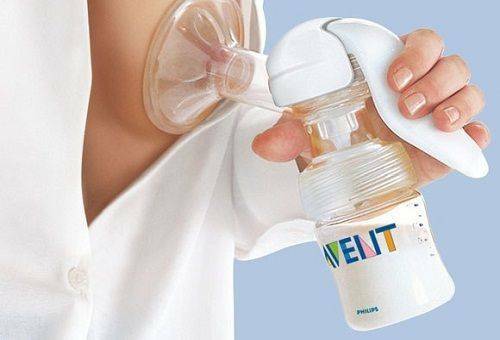
- How does hydrogen peroxide work?
- Recommendations for the use of
- Basic methods of bleaching with hydrogen peroxide
- Possible consequences
Everyone wants to have not only healthy, but also snow-white teeth, because this has long been a model of beauty. Of course, you can resort to the services of professionals and whiten the tooth enamel in the dentist's chair, but it's quite expensive. Fortunately, there are always simple, however no less effective folk methods. So, whitening with hydrogen peroxide is one of the most sparing and affordable ways for home use.
to the contents ↑How does hydrogen peroxide work?
This is a medical solution of 3% concentration. It is designed to treat wounds and skin damage, stop bleeding. The liquid does not have a specific odor, but it is unpleasant to taste, undesirable for ingestion.
Due to the chemical composition, peroxide has excellent bleaching properties, and also penetrates deeply into the enamel of the teeth and directly into the dentin.
Important! It is at this moment that the whitening reaction begins, and it is so intense that if you do not remove hydrogen peroxide from the tooth surface in time, then you can say goodbye to the enamel forever - the substance will simply eat it. For this reason, peroxide bleaching should be neat and not daily.
If you have problems with your teeth, you should consult a specialist to avoid problems. After all, as is known, teeth are not restored.
to the contents ↑Recommendations for the use of
Inaccurate use of the substance can completely disrupt the integrity of the enamel, because the oxygen with which the teeth are cleaned directly can penetrate even the deepest layers of the dentin. Therefore, it is worth following the following recommendations that bleaching with hydrogen peroxide does not cause harm:
- Use only a solution of 3% hydrogen peroxide. Otherwise - not only the teeth will suffer, but also the skin of the oral surface.
- As with any home method, there is no quick result. Visual changes will be noticeable only after several days of application. The course itself should not be long-2 weeks is quite enough. And in a year there should be no more than 3-4 courses of bleaching.
- Before using, always visit a dentist. First, only an expert can tell whether it is possible to use such methods. Secondly, with tooth diseases and even caries, bleaching with hydrogen peroxide is prohibited.
- Use of the substance should be very careful. If during the procedure there were side effects, for example, burning, discomfort, nausea, then it must be urgently stopped and completely abandoned the drug.
- Even before the first procedure it is necessary to make sure that there are no allergic reactions. But if during bleaching, you find any symptoms, then immediately you need to visit a doctor and take antihistamines.
- It is forbidden to use this method for people with increased sensitivity of teeth, wearing braces and, of course, pregnant and lactating women.
- You can use only peroxide, which was stored in the right way - in a closed bottle in the refrigerator, as well as in which the expiration date has not expired.
Basic ways of bleaching with hydrogen peroxide
Bleaching with hydrogen peroxide can be done in several ways. Which will be more convenient and acceptable for you - decide for yourself.
Rinse
This is the easiest way to whiten your teeth at home:
- Dissolve 3% peroxide solution in water in a 1: 1 ratio.
- Before the procedure, thoroughly brush your teeth with a paste with a high content of fluoride - this will protect the enamel.
- Then rinse the mouth with a prepared solution.
- Then wait for 5 minutes and rinse your mouth again, but with water.
Important! After the procedure, you can not eat and drink for 30 minutes .
Bleaching with soda and hydrogen peroxide
The effectiveness of this method consists in the interaction of two substances of opposite chemical nature:
- Take a solution of peroxide and ordinary baking soda, mix until a thick consistency of thick porridge.
- You can clean the enamel with prepared substance only with your fingers or with a cotton swab, it is not recommended to use a brush.
- Apply the compound on the finger and clean it thoroughly with the surface of the teeth, while avoiding getting the product on the gums.
- After the procedure, rinse mouth several times.
Toothpaste at home
Take any paste, preferably with a high content of fluoride. Immediately before cleaning the enamel, drip a few drops of peroxide and lemon juice. Then just brush your teeth.
to Contents ↑Possible Effects
Bleaching with hydrogen peroxide is a gentle way to clean enamel from a wide variety of contaminants. At the same time, you should not abuse the method, because you can only harm the teeth.
Important! The method will be completely useless for people with dark enamel from nature.
Often after the bleaching course, the following side effects are noted:
- The sensitivity of the teeth is increased. As a rule, it manifests itself when you use cold or hot foods. This is due to the fact that peroxide thins the enamel and bare the nerve endings. The problem can be solved with a special toothpaste to reduce sensitivity.
- With very frequent use it is possible to achieve the effect of excessive bleaching. This is due to the fact that the outer glossy layer of the enamel is almost completely erased. Teeth become chalky and require dental care.
- When bleaching peroxide, demineralization occurs. The main indicator of this process is the appearance of white spots on the teeth. And further in these places caries are formed. Therefore, when even minor unusual signs appear, the drug should be discontinued immediately.
As you can see, teeth whitening with peroxide is effective, but use this procedure carefully, observing all the rules and nuances. Carefully watch your condition and the appearance of your teeth so that you can stop in time and take proper measures.



